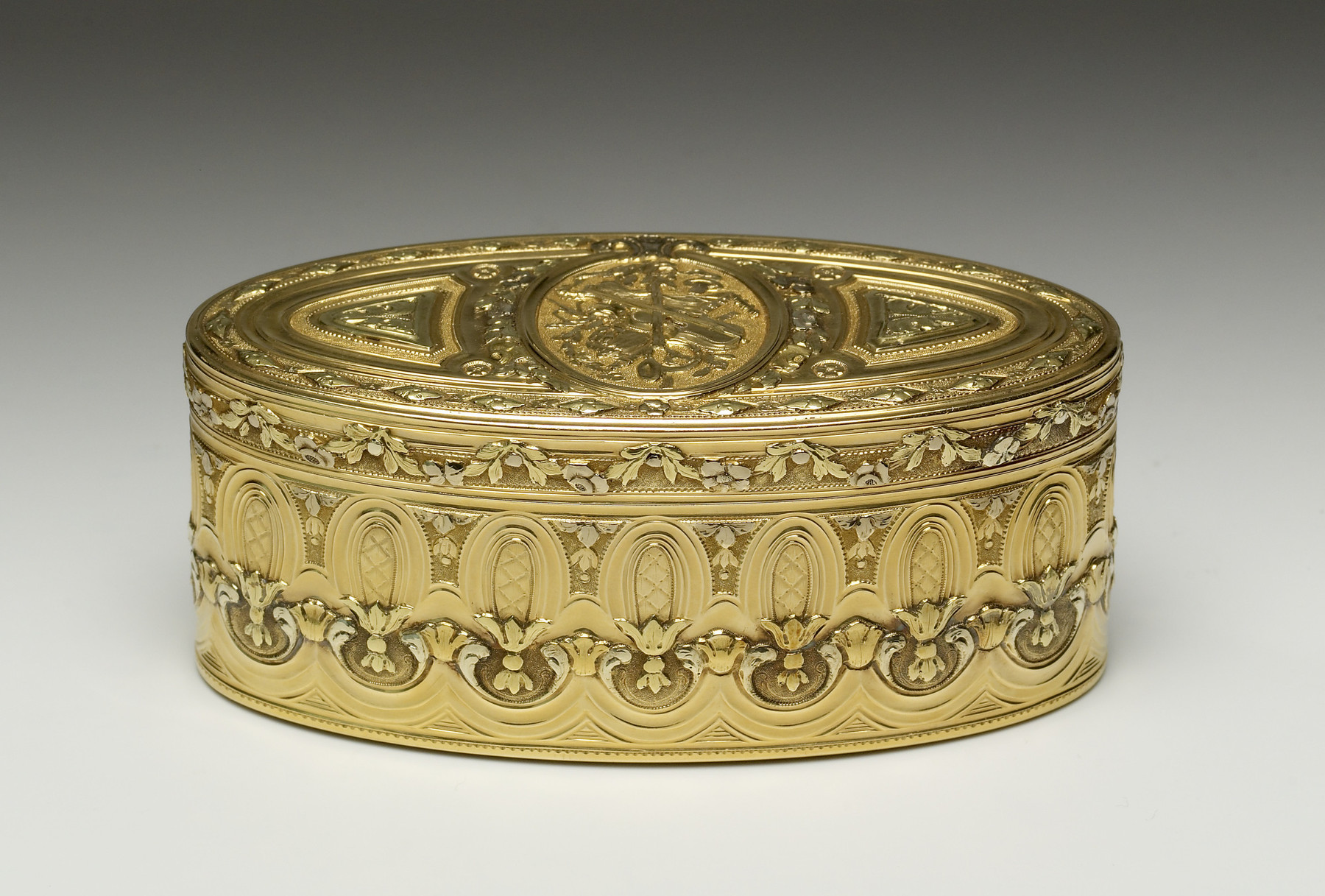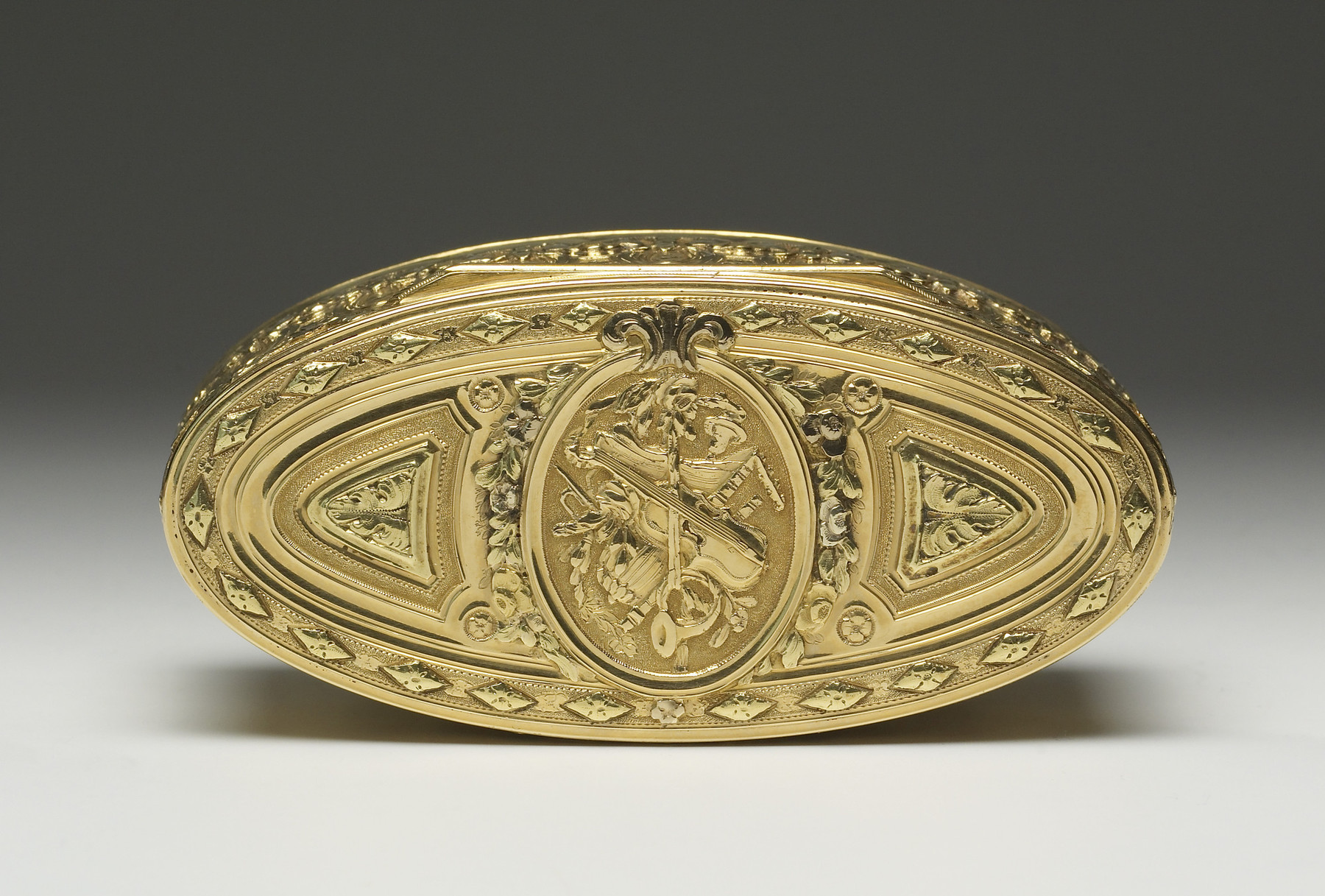Snuffbox with Trophy
(18th and 19th Centuries )
Originating in the Americas, the practice of “taking snuff,” or inhaling pulverized tobacco through the nose, became a common European custom by the 17th century. Consumers of all social levels and of both sexes would carry small, airtight boxes filled with the powdered tobacco, taking a pinch whenever they needed. Over time, however, society’s elites began to purchase and commission increasingly extravagant and precious boxes. Kings and Queens would often present snuffboxes to ambassadors as diplomatic gifts and to courtiers as payment for services. Made of a variety of precious materials, including gold, enamel, semiprecious stones, lacquer, and tortoiseshell, snuffboxes were coveted and enthusiastically collected. Displaying one’s collection of prized snuffboxes or stylishly retrieving an elegant box from one’s pocket were important social rituals; these objects revealed a person’s tastes, interests, and erudition. A musical trophy decorates the lid of this oval snuffbox.
Inscription
Provenance
Provenance (from the French provenir, 'to come from/forth') is the chronology of the ownership, custody, or location of a historical object. Learn more about provenance at the Walters.
Frederick Henry Maitland, 13th Earl of Lauderdale [1840-1924]; Sale, Christie's, London, June 30, 1911, no. 42; George Harding, London [date and mode of acquisition unknown]; Henry Walters, Baltimore, 1914, by purchase; Walters Art Museum, 1931, by bequest.
Exhibitions
| 1980 | European Snuffboxes. Headley-Whitney Museum, Lexington. |
Geographies
France, Paris (Place of Origin)
Measurements
H: 1 3/4 × W: 3 11/16 × D: 1 9/16 in. (4.4 × 9.3 × 3.9 cm)
Credit Line
Acquired by Henry Walters, 1914
Location in Museum
Not on view
Accession Number
In libraries, galleries, museums, and archives, an accession number is a unique identifier assigned to each object in the collection.
In libraries, galleries, museums, and archives, an accession number is a unique identifier assigned to each object in the collection.
57.94




